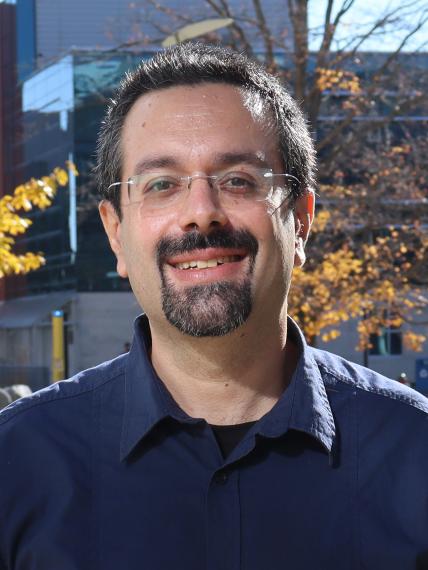Alexandros Gezerlis

Find Related People by Keyword
Instrumentation
Dr. Gezerlis’ research employs high-performance computing facilities, such as (Ontario’s) Sharcnet and the (US Department of Energy) National Energy Research Scientific Computing Center (NERSC).
Education and Employment Background
Dr. Alexandros Gezerlis received his PhD in Physics from the University of Illinois at Urbana-Champaign in 2009, after spending three years at Los Alamos National Laboratory. He went on to work as a Research Associate at the University of Washington and the inaugural Herzberg Fellow at Technische Universitaet Darmstadt in Germany. He joined the University of Guelph in 2013, where he is currently a Professor in the Department of Physics.
Research Themes
Gezerlis’s research focuses on quantum many-body theory, with an emphasis on fermions. His research touches on a wide range of topics from ultracold atomic gases to terrestrial nuclei to the astrophysical objects known as neutron stars. Gezerlis uses microscopic simulation methods on modern supercomputers, along with more phenomenological approaches, to predict or postdict interesting physics. Key areas of focus include:
- From nucleons to nuclei. The interaction between nucleons arises from the fundamental theory of Quantum Chromodynamics. Regardless of their origins, nuclear forces are quite complicated: they depend on much more than the distance between the particles, while they also appear in three- and many- nucleon varieties. Nuclei are the finite systems emerging from these complicated interactions. A major current frontier, experimentally attacked in facilities such as TRIUMF (Canada), FAIR (Germany), and FRIB (USA), relates to neutron-rich nuclei.
- Neutron Stars. A neutron star can be thought of as an astrophysical laboratory, containing nucleon matter under extreme conditions. Neutron stars are layered, with increasing theoretical uncertainty as one approaches the center of the star. Gezerlis focuses on the crust and core, using terrestrial experiments to constrain nuclear theory, while also trying to quantify the theoretical uncertainty of astrophysically relevant microscopic calculations.
- Ultracold atoms. For most of the 20th century the study of pairing using atoms was focused on the fermionic and bosonic varieties of Helium. Then, experimentalists learned how to manipulate alkali gases (bosons in the 1990s, fermions in the 2000s). These systems can help probe new states of matter, simulating the complicated systems appearing in other areas of physics. Gezerlis is interested in the overlap of cold atomic systems with the physics of nuclei and neutron stars.
Highlights
- Research Excellence Award, Office of Research and Office of the Provost, University of Guelph, 2017
- Early Researcher Award, Ontario Ministry of Research, Innovation and Science, 2017
- Discovery Accelerator Supplement, Natural Sciences and Engineering Research Council of Canada (NSERC), 2016
- Inaugural Herzberg Fellowship, TU Darmstadt, 2013
Media Coverage
Research breakthroughs
- CEPS News: Up and Atom
- CEPS News: Rules of Attraction
- Physics synopsis: Pairing in Nuclei
Awards and funding
- Laboratory Focus: CFI invests in U of G research leaders